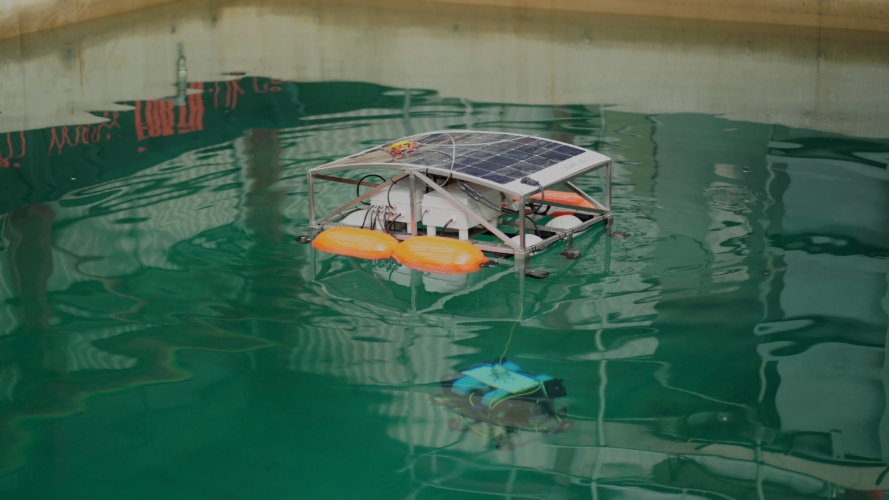A2I2 underwater survey robot thrives in the deep end
An autonomous underwater robot developed with a view to aid nuclear decommissioning has been tested at a demonstration in Cumbria.

Autonomous Aquatic Inspection and Intervention (A2I2) is the work of a wide-ranging UK collaboration led by Rovco that includes Forth Engineering, D-RisQ, the National Oceanography Centre (NOC), Thales UK and Manchester University. The demonstration, which took place at Forth’s 1.2 million litre tank facility in Maryport, saw the robot successfully move autonomously through the deep-water pond, avoid collisions, locate items on the pond floor and relay images in real-time back to screens nearby on dry land.
Sellafield plutonium a multi-layered problem
The capabilities of A2I2 bring together 3D computer vision, simultaneous location and mapping (SLAM), autonomous path planning and scene understanding using Machine Learning (ML). While the technology has been designed primarily for the storage ponds at nuclear sites such as Sellafield, the ‘Intelligent Data Collection System’ can be integrated onto any subsea vehicle to enhance its capability, according to Rovco.
Register now to continue reading
Thanks for visiting The Engineer. You’ve now reached your monthly limit of news stories. Register for free to unlock unlimited access to all of our news coverage, as well as premium content including opinion, in-depth features and special reports.
Benefits of registering
-
In-depth insights and coverage of key emerging trends
-
Unrestricted access to special reports throughout the year
-
Daily technology news delivered straight to your inbox










Water Sector Talent Exodus Could Cripple The Sector
Maybe if things are essential for the running of a country and we want to pay a fair price we should be running these utilities on a not for profit...